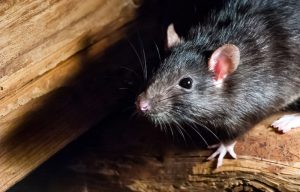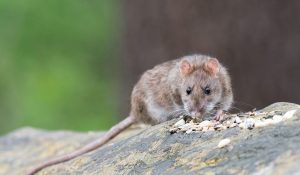Whether you’re outright afraid of rodents or you just don’t like having them inside your home, these pests can cause some serious problems if they take up residence. One of the most common house-invading rodents in the world is the house mouse and, despite their tiny size, the dangers they pose are anything but small.
House Mice: A Prolific Problem
Mice are some of the most prolific pests around, by which we mean they can reproduce quickly and in large quantities. Female house mice average six to eight mouse pups in every litter and get pregnant up to ten times in one year, since it only takes a few weeks for a full gestation cycle. In layman’s terms, they can make a whole lot of babies in a short amount of time. With so many mice around, the other problems they cause multiply as well:
- Damage: Mice must constantly chew on materials that file their ever-growing front teeth down. They can chew up wood, carpeting, electrical wiring, and even some metals.
- Disease: Pests of all kinds can spread disease; vermin like mice are no different. Not only can they track germs after rooting around in sewers and dirty places looking for food, but they can actually be sick with diseases that are passed along via bites or other contact.
- Odor: Mice don’t clean up after themselves, and the feces and scraps they leave behind can result in a gross, musty odor. This can easily permeate if rodents have shacked up in the walls of a home.
How To Spot A Mouse Infestation
Mice are very good at staying out of sight, so you’re more likely to spot the signs of their activity than you are to spot the rodents themselves. Regular inspection of your home or business can clue you into rodent activity early, and we already covered why it’s important to solve the problem before a small infestation becomes a full-blown population.
Here are some indicators of mouse activity to look for:
- Bite marks: As mice chew on materials to file their teeth, they’ll leave behind the telltale signs on wood or metal. Chewed-through electrical wiring is another dead giveaway.
- Noise: One way mice stay out of sight is by traveling through vents, wall spaces, and attics. If you hear the sounds of scrabbling or other noises coming from these areas, chances are you’ve got a pest problem.
- Droppings: Mouse feces is much smaller than your dog’s or cat’s, so if you notice small, raisin-like droppings around your home, that’s a sign of mice activity.
Smith’s Has Your Back
With so much to watch out for and implement in order to make your home pest-proof, it can seem like an overwhelming proposition to keep house mice out. Luckily, you don’t have to go it alone. The professionals at Smith’s Pest Management are here to help. We’ve got experience preventing and removing rodent infestations in all kinds of properties, including commercial businesses and homes.
Our experts are standing by for a phone consultation and to answer any questions you might have about identifying a rodent infestation. We can quickly schedule an inspection of your property, getting a trained set of eyes looking for the smallest details of a mouse population. We will tailor a prevention or elimination program that matches your property, schedule, and budget.
Whether house mice have already moved in, or even if you just want the peace of mind knowing that professional prevention measures are in place, Smith’s Pest Management can help. Don’t risk the dangers that rodents can pose to your health and that of your family or customers. Call us today.






